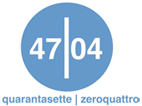In the second half of the 20th century, Gorizia was marked by the presence of the border.
A material, concrete sign, evident in the watchtowers, checkpoints, and barriers.
But also an immaterial trace, made of memories, emotions for “what remained on the other side,” fears but also fascination with different political and economic models.
A past that shapes the relationships between national communities, but also a future that opens up opportunities and chances.
A complex and multifaceted history, which can be told through some everyday objects with strong symbolic value, objects that contain different stories and perspectives. Fragments of memories, moments of lived life.
Around the table, usually the big one in the kitchen, many Gorizia families gathered in the autumn of 1947 to discuss which side of the newly defined border to stand on.
And from that choice, individual and family destinies depended.
A large table now occupies the center of this room. On the table, some objects are capable of evoking stories and memories, fragments of those lives lived in Gorizia and Nova Gorica, the old city and the new city, divided and united by a border line.
Just place them on the center of the table and then sit down, to listen.

